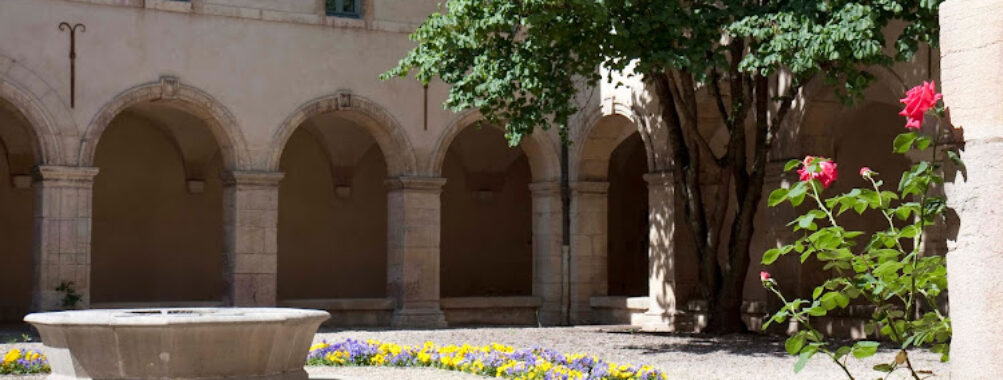
Museum of Burgundian Life
Table of Contents
Description
The Museum of Burgundian Life is one of those places where you feel like you’ve stepped straight into another era. Housed in an old monastery, the building itself already sets the mood—quiet stone walls, a sense of history clinging to every corner, and that hushed atmosphere that makes you instinctively lower your voice. Inside, the museum tells the story of daily life in Burgundy across centuries, not through dry text panels, but through costumes, furniture, tools, and carefully staged rooms that feel almost lived in. You don’t just see objects; you see how people once worked, cooked, prayed, and celebrated.
Now, I’ll be honest, not every display sparkles with excitement. Some sections feel a little static if you’re the type who craves flashy digital screens or high-tech interactivity. But that’s not really the point here. What makes this place special is the way it captures the rhythm of everyday life in Burgundy, from farmers and artisans to merchants and families. It’s not about kings and queens—it’s about the people who built the culture of the region from the ground up. And that’s refreshing.
Walking through, I found myself slowing down, imagining what it must have been like to wear those heavy traditional costumes or to cook over an open hearth. It reminded me of visiting my grandmother’s attic as a kid, where every object seemed to hold a story. You’ll leave with a sense that history isn’t just dates and battles—it’s the texture of fabric, the clink of pottery, the smell of wood. That’s what this museum captures so well, even if it doesn’t always dazzle with modern polish.
Key Features
- Located inside a former monastery, adding a unique historic backdrop to the exhibits
- Re-enactment style displays of domestic life, with costumes and artifacts arranged in lifelike settings
- Extensive collection of regional costumes, tools, and household objects
- Family-friendly atmosphere, with plenty of exhibits that children can enjoy
- Accessibility features including wheelchair-friendly entrance, restrooms, and parking
- Onsite restrooms available (though no restaurant, so plan meals accordingly)
Best Time to Visit
If you’re the type who hates crowds, weekdays in the morning are your best bet. The museum tends to be calmer then, and you can take your time wandering without feeling rushed. Summer afternoons can get busy, especially when families are traveling, but the building’s thick monastery walls keep it pleasantly cool even on hot days. Personally, I loved visiting in autumn. Something about the crisp air outside and the cozy, old-world atmosphere inside made the whole experience feel even more authentic. Winter visits can be charming too—there’s a certain quiet magic when you step from the cold streets into the warm, history-filled rooms.
How to Get There
Reaching the Museum of Burgundian Life is straightforward if you’re already exploring the city. Public transport options are reliable, and walking from the historic center is a pleasant stroll if the weather’s kind. For those driving, there’s wheelchair-accessible parking nearby, which is a thoughtful touch. I’d say skip the car if you can, though—navigating narrow city streets and finding parking can be more trouble than it’s worth. Instead, make the journey part of your day: meander through the old streets, grab a coffee on the way, and let the anticipation build as you approach the monastery.
Tips for Visiting
Here’s the thing: this isn’t a museum you rush through. Give yourself at least two hours, maybe more if you’re the type who likes to read every little description. And bring a bit of imagination with you—these rooms come alive when you picture the people who once lived this way. If you’re traveling with kids, they’ll probably enjoy the costume displays and the re-created domestic scenes more than the quieter sections.
Since there’s no restaurant onsite, it’s smart to eat beforehand or plan a meal after your visit. You’ll find plenty of cafés and bistros within walking distance, and honestly, sitting down with a glass of Burgundy wine after immersing yourself in the region’s history feels like the perfect way to complete the experience.
One more tip: take a moment to appreciate the monastery itself. Sometimes visitors rush straight to the exhibits and forget to look at the building. The stone arches, the quiet cloisters—it’s like history layered on top of history. And don’t worry too much if you don’t speak French fluently. While not every sign is translated, the visual storytelling is strong enough that you’ll understand the narrative.
In short, the Museum of Burgundian Life is not a glossy, high-tech attraction—it’s something quieter, more thoughtful, and maybe even more rewarding. It’s a place where you can slow down, step into the shoes of past generations, and leave with a richer sense of what Burgundy really is beyond the wine and the postcards. And honestly, that’s the kind of travel experience that sticks with you long after you’ve gone home.
Location
Places to Stay Near Museum of Burgundian Life
Find and Book a Tour
Explore More Travel Guides
No reviews found! Be the first to review!